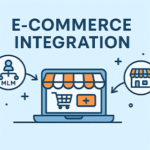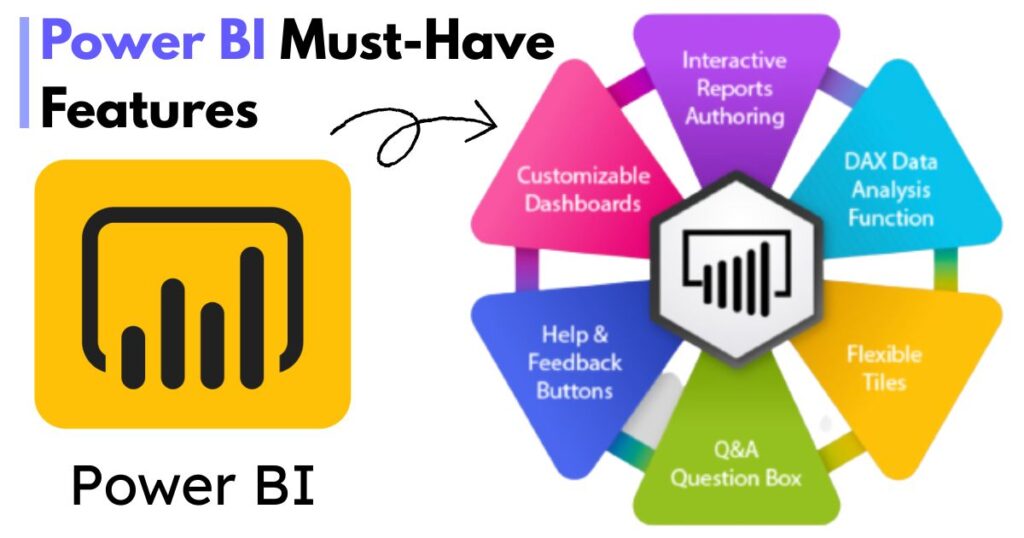Power BI has rapidly evolved into a dominant force in business intelligence. As of 2024, over 33% of businesses globally use Microsoft Power BI for data analytics and visualization (Statista). According to Gartner’s Magic Quadrant for Analytics and BI platforms, Power BI continues to lead for the 16th consecutive year in terms of functionality and user satisfaction. These trends highlight the rising demand for Power BI Analytics Services across industries.
For professionals and organizations looking to optimize data insights, it is vital to understand the technical features that distinguish Power BI. This article outlines key elements every user should know before fully adopting the platform.
1. Unified Platform for Data Sources
Power BI supports hundreds of data sources, providing a unified approach to data integration. It enables users to connect:
- Cloud-based services (Azure SQL, Salesforce, Google Analytics)
- On-premise databases (SQL Server, Oracle, Excel, Access)
- Web APIs and flat files (CSV, XML, JSON)
This feature ensures compatibility and adaptability with existing data infrastructures.
Example: A logistics firm used Power BI to integrate shipment data from SQL Server and customer data from Salesforce, helping track order fulfillment efficiency.
2. Interactive Dashboards and Reports
Power BI dashboards are fully interactive. They allow users to drill down into datasets and filter visuals based on real-time parameters.
Key Features:
- Drag-and-drop interface
- Custom themes and templates
- Real-time data updates with DirectQuery
These capabilities improve user engagement with data.
Example: A retail chain uses interactive dashboards to monitor hourly sales across 50+ stores. Managers make timely decisions based on visual data cues.
3. Data Modeling with DAX
Power BI supports robust data modeling through Data Analysis Expressions (DAX). DAX is a formula language designed to work with relational data and perform complex calculations.
Capabilities include:
- Creating calculated columns
- Defining KPIs
- Time intelligence functions (e.g., YTD, QTD)
Table: Common DAX Functions
|
Function |
Purpose |
|
CALCULATE |
Modify filter context |
|
SUMX |
Row-by-row aggregation |
|
RELATED |
Access related table data |
|
DATESYTD |
Year-to-date calculation |
4. Power Query for Data Transformation
Power Query is an embedded ETL (Extract, Transform, Load) tool. It supports advanced transformations without writing code.
Features:
- Merge and append queries
- Replace values and pivot columns
- Handle missing or duplicate data
Example: A financial analyst can use Power Query to clean inconsistent entries from monthly ledgers before analysis.
5. AI and Machine Learning Integration
Power BI integrates AI capabilities that enhance data interpretation.
Built-in features include:
- Natural language queries (Q&A visual)
- Key influencers visual for root cause analysis
- Integration with Azure Machine Learning
Example: A healthcare provider uses Key Influencers to identify risk factors contributing to readmissions.
6. Security and Compliance Controls
Power BI ensures data protection with built-in security mechanisms.
Security Features:
- Row-Level Security (RLS) for user-specific data access
- Azure Active Directory integration
- Microsoft Information Protection support
Compliance Standards Met:
- GDPR
- HIPAA
- ISO 27001
Example: A bank applies RLS to restrict access to branch-level performance reports for regional managers only.
7. Power BI Service and Workspace Collaboration
Power BI Analytics Services are greatly enhanced by the cloud-based Power BI Service. It supports sharing and collaboration at scale.
Key Functions:
- Publish reports to app workspaces
- Schedule data refreshes
- Comment and annotate reports
Example: A marketing team shares campaign performance dashboards with leadership weekly through shared workspaces.
8. Mobile Accessibility
Power BI offers dedicated mobile apps for iOS and Android, enabling access to dashboards anytime, anywhere.
Benefits:
- View live dashboards on the go
- Receive push notifications for alerts
- Use QR code scanning to access reports
Example: Field sales teams use the app to review customer performance data before client meetings.
9. Integration with Microsoft Tools
Power BI tightly integrates with the Microsoft ecosystem.
Compatible Tools:
- Excel (PivotTables, Power Pivot)
- Microsoft Teams (embed dashboards in channels)
- SharePoint (web part integration)
Example: Finance teams can export Power BI visuals directly into Excel for additional calculations.
10. Scheduled and Incremental Data Refreshes
Power BI allows users to refresh datasets on a fixed schedule or incrementally, which minimizes load on servers.
Technical Benefits:
- Reduces processing time
- Ensures current data availability
- Supports hybrid data models
Table: Data Refresh Types
|
Type |
Description |
|
Full Refresh |
Replaces entire dataset |
|
Incremental |
Loads only new or changed data |
|
On-Demand |
Manual refresh triggered by user |
11. Power BI Embedded and REST APIs
Developers can use Power BI Embedded and APIs to integrate reports into web or mobile applications.
Use Cases:
- Create white-label dashboards for clients
- Automate report deployment
- Embed real-time analytics in SaaS apps
Example: A software vendor integrates analytics into their HR platform using Power BI Embedded.
12. Version Control and Deployment Pipelines
Power BI Deployment Pipelines allow teams to move content between development, test, and production environments with version control.
Key Features:
- Change tracking
- Deployment automation
- Environment comparison tools
Example: A product analytics team tests new dashboards in a sandbox environment before rolling them out.
Conclusion
Power BI Analytics Services offer a rich set of features that cater to data professionals, developers, and business users. Understanding these technical features enables users to extract actionable insights effectively and securely.
From advanced DAX modeling to seamless Microsoft integrations, Power BI provides a comprehensive and scalable analytics solution. Organizations across sectors continue to adopt it due to its user-centric design, security framework, and real-time collaboration features. Staying informed about these capabilities ensures you get the most value from your BI investment.
Frequently Asked Questions (FAQs)
- What are Power BI Analytics Services?
Power BI Analytics Services refer to the professional offerings that help businesses implement, customize, and maintain Power BI solutions. These services include dashboard creation, data modeling, integration with existing systems, and report automation to drive data-informed decision-making. - Can Power BI handle real-time data?
Yes, Power BI supports real-time data through DirectQuery and streaming datasets. This allows dashboards and reports to update instantly when the source data changes, which is crucial for monitoring live metrics such as sales, web traffic, or manufacturing output. - How secure is Power BI for enterprise use?
Power BI includes robust security features like Row-Level Security (RLS), Azure Active Directory integration, and compliance with major regulations such as GDPR, HIPAA, and ISO 27001, making it suitable for enterprise-level deployments. - What is DAX and why is it important in Power BI?
DAX (Data Analysis Expressions) is a formula language used in Power BI for creating custom calculations and data models. It allows users to define KPIs, apply time intelligence, and build dynamic measures to extract deeper insights from data. - Is Power BI suitable for small businesses or just large enterprises?
Power BI is highly scalable and fits both small and large businesses. With a free desktop version, flexible licensing, and cloud-based sharing, even small teams can benefit from its powerful analytics capabilities without a large upfront investment.
- Key Features of Power BI You Shouldn’t Ignore | Uncover Powerful Insights Today
- Discover the key features of Power BI that drive data-driven decisions. Learn how to maximize business insights with this powerful analytics tool.
- Power BI features, Power BI benefits, Power BI dashboard, business intelligence tools, data analytics, Power BI visualization, data reporting, Power BI tools, Power BI insights, Microsoft Power BI
Related posts:
 Top 5 Custom Software Development Companies in Edmonton 2025
Top 5 Custom Software Development Companies in Edmonton 2025
 Contrast Mapping for Dark Mode Accessibility in Taxi Booking Apps
Contrast Mapping for Dark Mode Accessibility in Taxi Booking Apps
 Boost Your Business with These App Development Companies in Kuwait
Boost Your Business with These App Development Companies in Kuwait
 How DevOps as a Service Accelerates Cloud Transformation for Modern Enterprises
How DevOps as a Service Accelerates Cloud Transformation for Modern Enterprises
 Retained vs. Contingent Search: Understanding the Value Dynamics Search Partners Brings to Each Model
Retained vs. Contingent Search: Understanding the Value Dynamics Search Partners Brings to Each Model
 Integrating MLM Software with E-Commerce Platforms: A Step-by-Step Guide
Integrating MLM Software with E-Commerce Platforms: A Step-by-Step Guide
 Integrating MLM Software with E-Commerce Platforms: A Step-by-Step Guide
Integrating MLM Software with E-Commerce Platforms: A Step-by-Step Guide
 The Wimbo Revolution: Transforming Real-World Friendships in 2025
The Wimbo Revolution: Transforming Real-World Friendships in 2025








